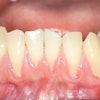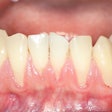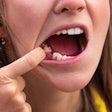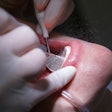Researchers at the University of Missouri (Mizzou) have developed a nanofibrous material that imitates natural periodontal tissue, which may help patients with gum disease keep their natural teeth, according to the university.
Engineering researchers have used stem cells to develop periopatch, a bio-inspired, porous material in which each of its three layers provides vital signals to guide stem cells to become periodontal ligament and bone separately, according to a university story published on June 16.
“This project could help patients regenerate functional periodontal tissues, offering an effective treatment for periodontitis,” Xiaohua Liu, a university engineering professor and a biomedical science and engineering researcher at NextGen Precision Health, said in the story.
In severe cases of periodontitis, patients often don’t have enough bone to receive an implant. In these cases, dentists are forced to pull the affected tooth. Liu was awarded a $2.9 million grant from the U.S. National Institutes of Health to tackle the challenges related to treating patients with gum disease.
The periopatch aims to solve this problem by using stem cells, which can renew and, therefore, are important in reviving damaged tissues, to regenerate the bond between tooth and bone.
“Basically, we create a unique sandwich-like structure that stimulates the regeneration of the periodontal ligament in the middle layer, anchoring one side to the bone and the other to the tooth,” Liu said of his research, which is a collaboration with Mizzou Engineering and NextGen Precision Health. “The goal is to form a functional, organized structure that can reconnect these periodontal tissues to support teeth.”




















